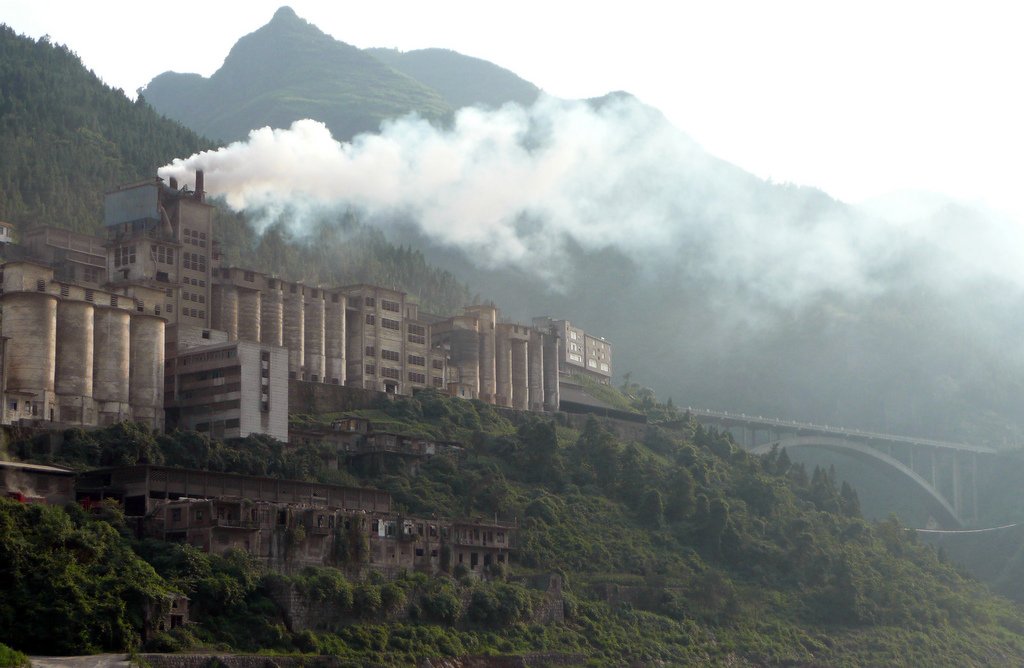The just-announced U.S.-China climate agreement is reason to celebrate—it’s a, as UCS’s Ken Kimmell puts it, “truly historic agreement” and “a welcome breakthrough.” For those with an interest in energy-water connections and collisions, the agreement commits both countries to a project focused on reducing the negative water implications of carbon capture and storage (CCS). Here’s why we’re even talking about water around CCS, and what this accord says about that the issue.
CCS as water hog…

U.S. freshwater withdrawals, 2005. Power plants are a big piece of the withdrawal pie, and an appreciable piece of water consumption. (Source: UCS compilation of USGS data — Kenny et al. 2009)
As UCS and collaborators have documented (here, here, and here, for example), the power sector is a big factor in the U.S. water scene for both water use (withdrawals and consumption) and water quality.
Our 2013 report Water-Smart Power: Strengthening the U.S. Electricity System in a Warming World showed how power plants also represent a big opportunity to make choices that make appreciable differences in water impacts, including in already stressed areas of the country, such as the Southwest and Southeast.
CCS is a technology that holds potential for addressing CO2, which is why UCS has been supportive of CCS pilots, to allow us to kick the tires on it—and get a better sense of the economics.
From a water perspective, though, one big factor is that adding CCS means that electricity generation gets a whole lot more water-intensive, as we discussed in Water-Smart Power:
Carbon capture and storage requires substantial amounts of water for the chemical and physical processes used to capture carbon emissions from the burning of fossil fuels… CCS also requires power, which in turn can entail more water use… Widespread deployment of CCS would require major advances to reduce its direct use of freshwater in the capture process, as well as its indirect use of water from the added electricity needs…
Adding CCS can increase water consumption in the range of 45 to 90 percent, it turns out. When we looked at the water implications of a range of electricity futures, the one that involved heavier use of CCS plus nuclear scored the worst (emphasis added):
Because of high water use per unit of electricity, the CCS-and-nuclear scenario would lead to greater water withdrawals and consumption by 2050 than under the other scenarios. Indeed, under the CCS-and-nuclear scenario, water consumption in the power sector would be 14 percent higher than today’s levels, 42 percent higher than under business as usual, and almost eight times that under the renewables-and-efficiency case in 2050.

Power plant water withdrawals and consumption under a range of scenarios (Source: Rogers et al. 2013). From a water perspective, there are probably better options than a future heavy on CCS and nuclear.
That water profile leads folks to conclude, as our friend Paul Faeth of CNA has, that “If you don’t have the water availability, it’s just a non-starter to double the amount of water you’re using in the power sector” by implementing CCS.
…Or CCS as wellspring?

A coal plant on China’s Yangtze River. (Source: Flickr, ishmatt)
The U.S.-China climate accord, though, talks not about the downside of CCS from a water perspective, but about the potential upside. Under its section “Advance major carbon capture, use and storage demonstration,” the White House fact sheet on the agreement says (emphasis added):
…both sides will work to manage climate change by demonstrating a new frontier for CO2 use through a carbon capture, use, and sequestration (CCUS) project that will capture and store CO2 while producing fresh water, thus demonstrating power generation as a net producer of water instead of a water consumer. This CCUS project with Enhanced Water Recovery will eventually inject about 1 million tons of CO2 and create approximately 1.4 million cubic meters of freshwater per year.
The water comes from the injection process itself: when you inject CO2 underground, sometimes water gets squeezed out. The quality of this “produced water” can vary greatly, but it can be pretty significant in quantity, and some of it could be good enough for drinking or agricultural use.
Cracking the CCS-water nut
As our Water-Smart Power analysis showed, other energy technology choices—notably energy efficiency and renewable energy sources like wind and solar—can cut carbon in the power sector while producing much more favorable water results, with important implications for lakes and rivers and those of us who depend on them.
But CCS isn’t a technology we necessarily want to take off the table, partially because of countries like China (and India) that are heavily dependent on coal and may take a while to make the switch to clean energy.
Cracking this nut—turning CCS into not just a viable option from a technical and economic perspective, but also a water one—could be a huge issue for China. Along with being heavily dependent on coal, the country also has serious water problems in key regions (plus serious money getting tied up in South-to-North water movement schemes to try to address those problems).
So we can be glad that piece is in this important U.S.-China climate agreement, and hope that good things come from all of it, for China, us, and the broader world.
